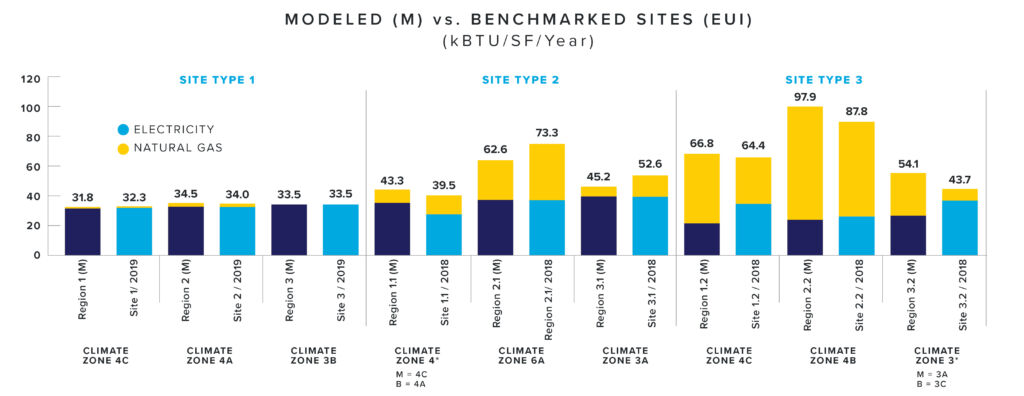Data Visualization Application
As progressive codes continue to drive down energy consumption, incentivize environmental protection, and reinforce ongoing system maintenance and operations, planners can anticipate investment in resources to strategically address their portfolio of operating spaces.
BUILDING OPTIMIZATION
Our ability to navigate the CBPS compliance pathways has translated to over 6 million square feet of operating spaces assessed, EEMs developed for 2+ million square feet, and a success story from the thirteenth largest school district in the state. Everett Public Schools turned to Hargis to assist it in preparing for the CBPS as part of its 2022 levy planning. Successful in effectively assessing, scoping, scaling, and data truing the district’s operating inventory, they are commencing with system upgrades in six of the schools that need to meet the CBPS requirements.
MIXED PROGRAM ELECTRIFICATION
Operating dispersed civic, municipal, and public safety spaces, we developed a framework to assess six sites (1.2 million sf) for potential energy conservation opportunities and CBPS compliance. Identifying two sites (778,543 sf) that required upgrades, we commenced with a more thorough energy audit to meet the client’s goals.
ENTERPRISE DECARBONIZATION
Public planners managing over 9 million square feet across 100-plus sites are aggressively preparing their facilities to meet three building performance requirements.
The team utilized data visualization to articulate the level of effort, priority of work, and sequence of projects to align with the owner’s capital program.
PREDICTIVE CARBON
Operating over 1,000 centers worldwide ranging from 80,000 to 1.5+ million square feet, this client committed resources to reduce its carbon footprint by 2040. They amplified their commitment with a near-term goal to achieve 10% carbon savings year-over-year.
Our team was engaged to develop a carbon-neutral roadmap for the four primary operating centers configurations, adaptive to the geographical distribution and various massing strategies associated with the business line.
The scale and reach of this effort were magnified by:
Over 1.1 million are employed in these centers – the human experience had to be considered in how we approach developing, presenting, and implementing the recommended solutions.
Dynamic Work Ecosystem – the workgroup chartered with this mission was new to the vast enterprise. Their work would need to coalesce into multiple other established groups’ workstreams. Disrupting ‘business-as-usual’ with the effort would require a level of education that needed to be communicated through the roadmap.
Visibility – all eyes were on the success of this initiative. It was a top-down directive that was ‘not optional’ and communicated widely throughout the client’s media channels. So, the plan had to be robust, viable, and measurable.
Applying our enterprise knowledge, how the different groups interface, enterprise design standards, the technical sophistication of this effort, and its reach, we delivered a document that encapsulated the initiative’s intent and the ongoing efforts required to comply. Adopted into the enterprise, activities are now underway.

